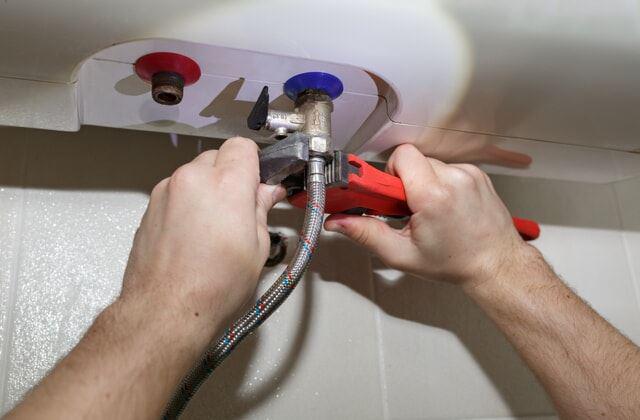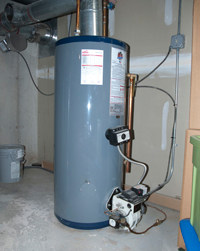The author is making a number of good pointers regarding How to Maintain Your Water Heater & Prolong its Life overall in this post followed below.

Warm water is crucial for everyday convenience, whether it's for a refreshing shower or cleaning dishes. To guarantee your hot water system runs successfully and lasts longer, routine upkeep is key. This post gives practical ideas and insights on exactly how to keep your home's hot water system to prevent disturbances and costly repair work.
Intro
Preserving your home's warm water system could seem complicated, yet with a couple of straightforward steps, you can ensure it operates efficiently for many years to find. This overview covers whatever from recognizing your warm water system to do it yourself upkeep pointers and knowing when to hire specialist aid.
Relevance of Keeping Your Warm Water System
Normal upkeep not just expands the life expectancy of your hot water system yet additionally guarantees it runs successfully. Overlooking upkeep can cause lowered performance, higher energy costs, and also early failure of the system.
Indications Your Warm Water System Demands Upkeep
Understanding when your hot water system needs interest can stop significant concerns. Keep an eye out for indicators such as irregular water temperature level, weird sounds from the heating unit, or rustic water.
Purging the Hot Water Heater
Flushing your water heater removes debris accumulation, enhancing performance and prolonging its life.
Checking and Changing Anode Rods
Anode poles avoid corrosion inside the container. Evaluating and changing them when broken is critical.
Complex Issues Calling For Professional Aid
Instances include significant leakages, electric issues, or if your water heater is consistently underperforming.
Routine Specialist Upkeep Advantages
Professional upkeep can include complete evaluations, tune-ups, and ensuring compliance with safety criteria.
Examining and Adjusting Temperature Level Settings
Readjusting the temperature settings makes sure optimal efficiency and security.
DIY Tips for Upkeep
You can perform a number of maintenance tasks on your own to keep your warm water system in top condition.
Looking for Leaks
Regularly check pipes and connections for leakages, as these can result in water damages and higher bills.
Recognizing Your Warm Water System
Before diving right into upkeep jobs, it's valuable to understand the standard elements of your hot water system. Commonly, this consists of the water heater itself, pipelines, anode rods, and temperature level controls.
Monthly Maintenance Tasks
Regular month-to-month checks can help capture minor concerns prior to they escalate.
Evaluating Stress Relief Valves
Examining the stress safety valve ensures it works appropriately and avoids extreme stress build-up.
Insulating Pipelines
Shielding hot water pipelines reduces warm loss and can conserve power.
When to Call a Specialist
While DIY maintenance is helpful, some issues need expert expertise.
Conclusion
Routine upkeep of your home's warm water system is crucial for efficiency, durability, and price financial savings. By following these suggestions and recognizing when to look for professional aid, you can ensure a dependable supply of warm water without unanticipated disturbances.
How to Maintain an Instant Hot Water Heater
Before tinkering with your hot water heater, make sure that it’s not powered on. You also have to turn off the main circuit breaker and shut off the main gas line to prevent accidents. Also turn off the water valves connected to your unit to prevent water from flowing into and out of the appliance. 2. When you’re done, you have to detach the purge valves’ caps. These look like the letter “T†and are situated on either side of the water valves. Doing so will release any pressure that has accumulated inside the valves while at the same time avoid hot water from shooting out and burning your skin. 3. When the purge valves’ caps are removed, you have to connect your hosing lines to the valves. Your unit should have come with three hoses but if it didn’t, you can purchase these things from any hardware or home repair shops. You can also get them from retail stores that sell water heating systems. Read the user’s manual and follow it to complete this task properly. When the hosing lines are connected, open the purge port’s valves. 4. You should never use harsh chemical cleaners or solutions when cleaning your unit. Make use of white vinegar instead. It should be undiluted and you’ll probably use about 2 gallons. 5. Now flush your water heater. This task should probably take about 40 minutes. We can’t give you specific directions for this because the procedure is carried out depending on the type, model and brand of your heater. With that being said, refer to the user’s manual. 6. When you’re done draining the unit, you have to turn off the purge port valves again. Remove the hosing lines that you earlier installed on each of the water valves. Put the valve caps (purge port) back in their respective places and be very careful so as not to damage the rubber discs that are found inside these caps. 7. Now that everything’s back in place, check your user’s manual again to find out how to reactivate your water heating system. 8. Once it is working, turn one of your hot water faucets on just to let air pass through the heater’s water supply pipes. Leave the tap on until water flows smoothly out of it. https://www.orrplumbing.com/blog/2014/september/how-to-maintain-an-instant-hot-water-heater/

I'm certainly very fascinated with What Kind of Maintenance Do Water Heaters Need? and I really hope you liked the entire blog post. Sharing is nice. You just don't know, you may very well be helping someone out. We thank you for your readership.
Get Started